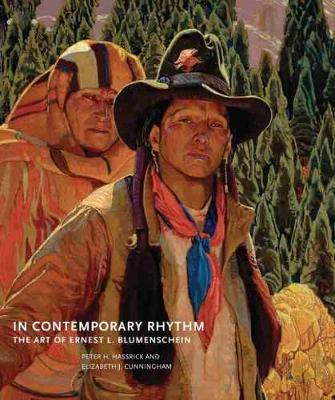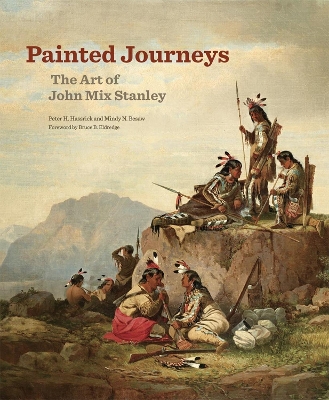The Charles M. Russell Center Series on Art and Photography of the American West
1 primary work • 2 total works
Book 2
The definitive retrospective on this prominent twentieth-century American artist
One of the founders of the Taos Society of Artists, Ernest L. Blumenschein (1874-1960) was perhaps the most complex and accomplished of all the painters associated with that pioneering organization. His critical acclaim transcended regional confines, and his work continues to be greatly admired.
This volume is the definitive work on Blumenschein's life and art, reproducing masterworks from a new exhibit along with additional works and historical photographs to form the most comprehensive assemblage of his paintings ever published. In Contemporary Rhythm describes not only his place in the Taos colony and western art but also his far-reaching influence on mainstream American art and national aesthetic developments.
The text by Peter H. Hassrick and Elizabeth J. Cunningham draws on Blumenschein's papers as well as other archival sources to explore in depth the dimensions of his multifaceted life and his place in American history and culture. They examine his 64-year artistic career, first as an illustrator and then a painter, revealing how his technique evolved and how his schooling and the artistic movements of his time informed his work. Additional contributions by noted art historians focus on particular paintings and certain aspects of the artist's work, including his promotion of American Indian rights.
As the only book of its kind available on this influential artist, In Contemporary Rhythm is a major contribution to American art history. It is also a visual feast.
Originally from New York State, Stanley journeyed west in 1842 to paint Indian life. During the U.S.-Mexican War, he joined a frontier military expedition and traveled from Santa Fe to California, producing sketches and paintings of the campaign along the way - work that helped secure his fame in the following decades. He was also appointed chief artist for Isaac Stevens's survey of the 48th parallel for a proposed transcontinental railroad. The essays in this volume, by noted scholars of American art, document and reflect on Stanley's life and work from every angle. The authors consider the artist's experience on government expeditions; his solo tours among the Oregon settlers and western and Plains Indians; and his career in Washington and search for government patronage, as well as his individual works.
With contributions by Emily C. Burns, Scott Manning Stevens, Lisa Strong, Melissa Speidel, Jacquelyn Sparks, and Emily C. Wilson, the essays in this volume convey the full scope of John Mix Stanley's artistic accomplishment and document the unfolding of that uniquely American vision throughout the artist's colorful life. Together they restore Stanley to his rightful place in the panorama of nineteenth-century American life and art.

